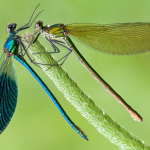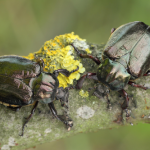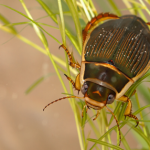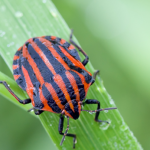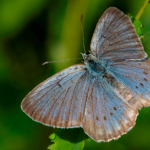 Foto: Mateusz Sowiński
Foto: Mateusz Sowiński
Great Green Bush-Cricket (Tettigonia viridissima)
This impressive insect of about 4 cm in length lives mainly in meadows, in tall grass or in trees. Lush green coloration blends it perfectly with the surrounding vegetation. With powerful rear legs it can jump extremely high and far. It feeds on both plants and insects. We often see how it eats away delicate plant buds or petals. As soon as the opportunity arises, it becomes a true predator, hunting for other insects. The female has an extra appendage on the abdomen, called the ovipositor, which is used to lay eggs in the ground. In spring the eggs hatch and small green larvae emerge which look like adults. Insects reach maturity in early July and then they start evening concerts. The sound, called chirping, is produced by rubbing one wing lid against the other. Only males play, thus luring females. In the fight for the chosen one they can be very aggressive and often lose their antennae or legs in skirmishes. Bush-crickets should never be touched with a bare hand since when they are alarmed they can bite painfully.




